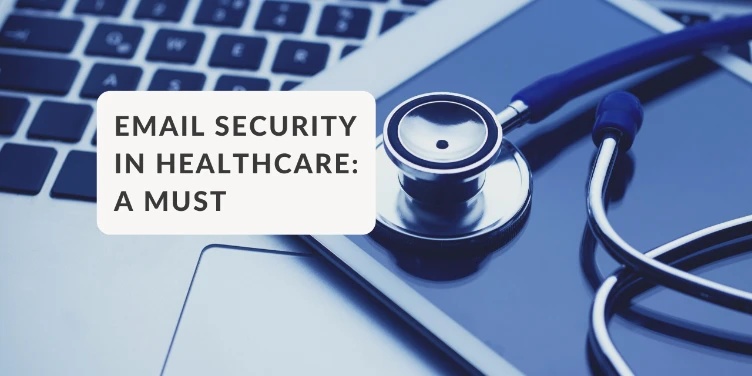Personal data is used daily in healthcare. Where paper used to be used for the exchange of medical information, this is increasingly done digitally. There are, however, challenges and dangers behind this. Because how can you do this without data leaks? You can read in this blog why this digitization makes safe emailing necessary.
Digitization in healthcare: eHealth!
Technology has made our lives easier in several ways. Consider, for example, buying a mattress. Where you used to have to figure out how to get the mattress in your car, you can now order your mattress and have it delivered with a few clicks. This saves you time that you can now spend on more important things. Nice, right?
This applies not only to mattresses, but also to healthcare. Do you still remember: the time you had to go to the hospital for a test result. This meant that you had to leave work earlier and travel to the hospital and then get a piece of paper stating that everything was okay. That sounds old-fashioned, right?
Fortunately, health organizations and hospitals are now increasingly communicating digitally with their patients or customers. This digital communication is called eHealth. There is sometimes doubt about the definition of the word, but this official definition describes it like this: "Using new information and communication technologies, and in particular Internet technology, to support or improve health and healthcare."
Making diagnoses, sharing and discussing results and exchanging information: it is all supported by technology. For example, last year video consultations ensured that care could continue as much as possible during the pandemic. Nowadays, there are even care robots that keep track of your movements! eHealth therefore makes care more accessible, qualitatively better and also creates more self-management among patients.
Email and healthcare
Email is a commonly used means of communication, which is also popular in healthcare. By 2020, approximately 306 trillion emails were sent every day! As easy and accessible as this is, there are also dangers. Healthcare organizations and hospitals often work with personal data. This makes the healthcare and welfare sector a major target for cyber attacks. Healthcare is one of the most affected sectors in terms of data leaks. Therefore, additional security is required during the exchange of patient data. A secure email solution is crucial. Otherwise, the consequences can be severe.
For example, the UMC in Utrecht once sent patient data to the wrong people. For example, addresses, telephone numbers and email addresses ended up with unauthorized persons.
Email security: a must
By now it may be clear how fragile and dangerous email can be. That is why it is no longer sufficient to simply send sensitive information via a regular email system. There are several reasons for this:
1. Human mistakes are made quickly
People are people and can make mistakes every now and then. This does not always have serious consequences, unless you exchange patient data. 74% of all data leaks are caused by sending information to the wrong person ! Imagine: it is Friday afternoon, and you are already ready for the weekend. Before you go home, you want to quickly send an email with sensitive data to a patient. Your speed later reveals that you have sent the email to the wrong patient. You don't want that to happen, right?
Therefore, use a system that responds to the speed, inattention and fatigue of employees and prevent an error like this.
2. Errors cannot be retracted
Making a mistake is almost inevitable. How nice would it be to use a system that allows you to withdraw incorrectly sent emails? This is not yet the case with many healthcare organizations and this can endanger the safety of your organizations and your patients.
Save your organization the financial and image damage associated with a data breach and use a system that allows messages, people and files to be blocked afterwards.
3. Regular email lacks functionalities that make emails safe
If you are not at home, do you leave the house key in front of the door? Then why would you do that with emails? Sending sensitive emails unsecured is an invitation for hackers to steal your data.
Nowadays, there are several tools with which you can give emails extra security:
- Two-factor authentication : The identity of the recipient must be confirmed twice before access to the data is granted. This way you can be sure that only the authorized recipient can read the content.
- End-to-end encryption : With this tool, your message is encrypted from beginning to end. Only the authorized recipient is given a key to make the message readable. Even if the email is intercepted by a cyber criminal, it is unreadable.
Digitization makes a lot possible, but can also destroy a lot. That is why we believe that prevention is better than cure. A data breach can have major consequences, and it is therefore worth investing in email security. Put the safety of your organization and patients first and take the first step towards a secure system!
Do you want to know more? Then read our brochure "How do you choose the right email security?":

